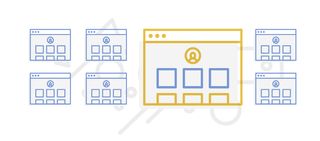How to sell your design ideas to clients
Marketer Dainius Runkevicius of TrackDuck passes on three pieces of invaluable advice.
Designers sometimes don't understand one thing about communicating design decisions to clients. In order to sell your ideas you need to, literally, sell them. You need to prove they can bring tangible benefits to the business and act as a means of selling stuff.
In convincing your clients you should forget the design itself, break the habit of arguing about the irrelevant and focus solely on things that are important to your client.
After all, we all usually strive for the same result but communicate in very different languages, see things differently and, what is even worse, don't trust each other – that is why agencies have account managers and sales managers on board.
In this article, I laid down some of the core principles, which, I believe, can help designers – especially freelancers – to sell design ideas better, and above all, to find a common language with their clients.
01. Speak in a language of your client and act, literally, like a salesman

Your client is not interested in design trends and other design-related stuff, which you designers are crazy about. The one who hires you cares about one thing: How your design will earn them money.
As a result, when presenting your design ideas to clients, answer them the questions: How it will help to increase a conversion rate, make visitors opt in, reduce bounce rate and etc, rather than telling how your ideas meet the latest design standards.
That is said, you should act like a salesman. You must sell your design. And in doing so, you should focus solely on the tangible benefits your work will bring to the client.
Get the Creative Bloq Newsletter
Daily design news, reviews, how-tos and more, as picked by the editors.
If you are a freelancer and don't have account managers and salesmen behind your back, my suggestion for you is to take some time and read a book on business-to-business sales. This will definitely open your eyes and make you better understand how to communicate and sell your ideas to very different kinds of people.
02. Gain credibility by backing up your ideas with numbers and examples

Most decisions we make are heavily affected by different kinds of cognitive biases and irrational prejudices. For some reason, we usually just can't make rational decisions.
Decision making in design is even harder because you can't measure everything. You just can't put variables into some kind of formula and get the right answer straight away. Design always leaves space for the unknown. That is why credibility plays here a large role in convincing people.
The only way to gain credibility is either to have job titles ending up with at Facebook, at Dropbox in your resume, or to arm yourself with statistics, researches and design examples from the big players.
In case you haven't worked at Facebook yet, gather as much statistical information as possible. Find a scientific explanation for every major decision in the design. Why have you chosen that palette of colors? Why do you prefer the one-page layout over the traditional one?
Don't worry if you can’t find numbers to substantiate some of your decisions. In this case, find well-recognized players in the market that have something more or less similar to what you recommend for the client. After all, it's hard not to trust the biggest.
03. Show in the right context

Designers sometimes think they can make the client fully understand their ideas and see "the bigger picture" from a few sketches, or even a few words.
Unfortunately, most people who work in the executive roles don't have the ability to see things as you do. As a result, the presentation of design ideas is as important as the design itself.
In selling your design ideas to clients, put everything into context. Whether you are designing a logo, website design or product packaging, use mockup templates to simulate its real use and help your client imagine how the design will look like at the very end.
Just spend a few additional minutes and photoshop a logo protopype on a client's product or put a website design on that beautiful Macbook-with-a-cup-of-coffee mockup.
Once again, act like a salesman. Wrap up your ideas into context that is hard to resist.
Summing up
You know it. There's no right answer in design. Just some data-backed hypothesis at best or entirely irrational speculations at worst. That is why, unless you have a big name that does the work for you, keep improving upon selling your ideas and be the sales representative of your creative mind, instead of focusing on the design process solely.
Words: Dainius Runkevičius
Illustrations: Anton Shevchenko
Dainius Runkevičius is marketer at TrackDuck, a visual feedback tool for web developers and designers that simplifies remote collaboration on web projects. Follow him on Twitter.

Thank you for reading 5 articles this month* Join now for unlimited access
Enjoy your first month for just £1 / $1 / €1
*Read 5 free articles per month without a subscription

Join now for unlimited access
Try first month for just £1 / $1 / €1
The Creative Bloq team is made up of a group of design fans, and has changed and evolved since Creative Bloq began back in 2012. The current website team consists of eight full-time members of staff: Editor Georgia Coggan, Deputy Editor Rosie Hilder, Ecommerce Editor Beren Neale, Senior News Editor Daniel Piper, Editor, Digital Art and 3D Ian Dean, Tech Reviews Editor Erlingur Einarsson, Ecommerce Writer Beth Nicholls and Staff Writer Natalie Fear, as well as a roster of freelancers from around the world. The ImagineFX magazine team also pitch in, ensuring that content from leading digital art publication ImagineFX is represented on Creative Bloq.
